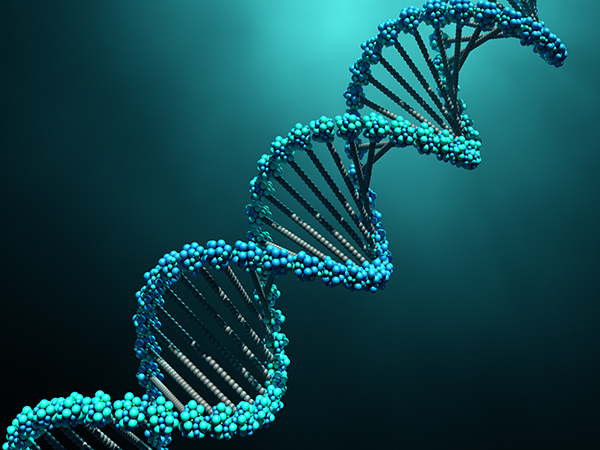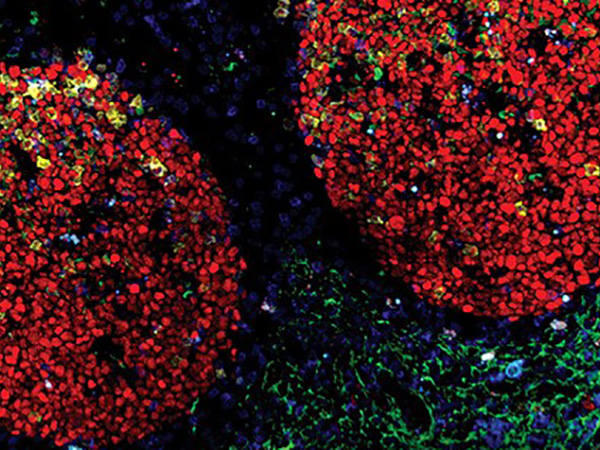AACR Virtual Annual Meeting I: Using Chemistry as a Catalyst for Drug Development
Chemistry is often called the “central science,” as this discipline intersects the physical and life sciences to provide an understanding of how molecules come together and break apart, which can result in a diverse set of substances and subsequent reactions. Chemists play a crucial role in cancer research, as the fundamental knowledge of how specific molecules interact with each other and affect biological systems is a crucial component of drug discovery and development.
Fifteen years ago, the American Association for Cancer Research (AACR) established the Chemistry in Cancer Research (CICR) Working Group. The mission of CICR is to advocate the critical role of chemistry in the treatment of cancer by increasing awareness, knowledge, and capabilities of those invested in cancer research. The group aims to enhance communication among researchers who share a passion for chemistry in cancer research; helps educate, inform, and augment knowledge in chemistry by developing programs; and addresses and supports the needs of chemists in cancer research. Today, this working group includes nearly 4,000 members.
“Chemistry is a fundamental part of cancer research, and I’m proud to be the chair of CICR,” said Philip Jones, PhD. Jones is vice president of the Therapeutics Discovery division and head of drug discovery at the Institute for Applied Cancer Science at The University of Texas MD Anderson Cancer Center.

Each year, CICR sponsors the New Drugs on the Horizon symposia at the AACR Annual Meeting.
The purpose of the New Drugs on the Horizon sessions, explained Jones, is to highlight new chemical and biologic agents that are entering clinical trials, and to disclose the structures of these molecules for the first time. “Our goal is to excite the community to the potential breakthroughs on the horizon, the opportunity that some of these agents could have for patients, and to highlight what chemistry and drug discovery bring to cancer research and treatment,” he said.
To prepare for the New Drugs on the Horizon sessions, CICR consults biotechnology, pharmaceutical, and academic drug discovery groups to identify the talks to be included in these sessions. This year, Jones said, CICR received more than 30 proposals. The committee attempts to cover a cross-section of both biologics and small-molecule therapeutics, a range of molecular mechanisms, different classes of protein targets, and different types of the disease, Jones said. “Preference is given to first-in-class agents.”
For the first time this year, the AACR Virtual Annual Meeting I added an additional session and hosted three New Drugs on the Horizon sessions. The three sessions included nine presentations, which described the following novel drugs:
- SNDX-5613, an inhibitor that targets the interaction between the proteins menin and MLL1, for the treatment of certain leukemias;
- The aryl hydrocarbon receptor inhibitor BAY2416964, which suppresses the activation of regulatory T cells and immune-tolerant dendritic cells;
- The glutaminase inhibitor IPN60090, for the treatment of certain patients with non-small cell lung cancer and ovarian cancer;
- The PARP7 inhibitor RBN-2397, designed to target stress-signaling pathways in cancer;
- TAK-788, evaluated in patients with lung cancer that harbors EGFR exon 20 insertion mutations, which TAK-788 selectively inhibits;
- The bispecific antibody AMG 509, which targets STEAP1 and CD3, for the treatment of prostate cancer and Ewing sarcoma;
- The estrogen receptor antagonist GDC-9545, for the treatment of estrogen receptor (ER)-positive breast cancer;
- ABBV-184, a bispecific therapeutic that targets survivin and CD3, tested against solid and hematological malignancies; and
- TNO155, an inhibitor of the oncoprotein SHP2, which is overexpressed in a host of different cancer cell types.
Presentations for Part 1, Part 2, and Part 3 of this series took place during both days of the virtual meeting.
“I humbly say we’ve got a good cross-section this year, which speaks to the wealth of new mechanisms being explored by the drug discovery and development community,” Jones said. “It’s an exciting decade for the development of new therapeutics with lots of new and exciting ways of modulating cancer biology that we hope will transform into new classes of medicines,” he added.



